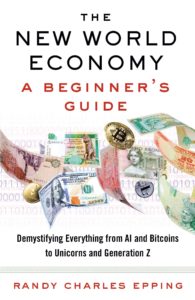I’ve been told that this thing called money is somewhat important in our modern society. So as much as I’d love to keep writing about sports and music, it’s time to switch gears. The concept of inflation is pretty clear when it comes to a balloon or a basketball, but what exactly is inflation in economics? To try to answer the question simply, I used two of my favorite resources—Investopedia and The New World Economy: A Beginner’s Guide.
Basic Definition
Inflation is the opposite of the less common deflation. The end. Okay, I’ll delve a bit further.
Inflation is a measure of the increase in prices over a period of time, often a year. Looked at another way, it is a measure of the decreased purchasing power of a given currency over that same period of time.
The figure is usually expressed as a percentage. For example, an annual inflation rate of two percent would mean that prices now are two percent higher than they were one year ago. To make the calculation, governmental entities typically look at indexes such as the Consumer Price Index (CPI). The CPI captures the price of a “basket” of goods and services that the average resident of a country buys over the course of a year. Comparison to the CPI of the previous year allows for calculation of the aforementioned inflation rate.
Causes
The root cause of inflation is felt to be an increase in the supply of money. Once this criteria is met, different mechanisms can take hold to drive up prices. Here is one common way of breaking things down, though my guess is that these categories don’t operate in isolation.
Demand-Pull Inflation
Strong consumer demand for certain products or services can create an imbalance between supply and demand. As the available supply decreases, consumers may be willing to spend more for items, translating into higher prices.
Cost-Push Inflation
If production costs increase—with the price of raw materials and worker wages being examples of contributors—these costs can be passed on to consumers by charging higher prices for finished goods (even if the demand for such goods is unchanged).
Built-In Inflation
As the price of goods and services increases over time, the expectation becomes that such increases will continue in the future. The result can be a demand for higher wages, which of course translate into a higher cost of goods and services, and so on.
Implications
How exactly to feel about inflation can be a complicated matter. At the end of the day, it’s all about perspective. What follows are a few basic takes.
Consumers who need to buy stuff will generally be upset that the stuff is more expensive (assuming their income has stayed the same).
On the other hand, those with certain types of assets may be fine with inflation, as the price of the assets will increase. A classic example that falls under this umbrella is property.
Of course, other assets may lose value with inflation, with an example being simple cash. Bonds can also land in this category, unless we’re talking about inflation-indexed bonds.
Exporters might not mind if a weakened currency means their goods end up being more affordable in a foreign currency. Importers who note foreign goods to be more expensive might feel differently.
You get the point. Despite this mixed bag, severe inflation—or hyperinflation—runs the risk of leading to a true economic crisis and is viewed as detrimental all around.
Strategies
Many economists feel that a certain amount of inflation is necessary for a healthy economy. This “just right” amount encourages some degree of spending over saving (because the value of a currency is expected to diminish over time).
In the US, an inflation rate of two percent is targeted as part of such a strategy. How exactly is this done? A central bank—the Federal Reserve—can adjust interest rates to control the money supply. For example, if the inflation rate is higher than desired, interest rates can be raised to encourage saving and discourage borrowing, i.e. lower the money supply. Similarly, the reserve requirement can be increased, meaning that banks must keep more money on hand, leaving less to lend. (When appropriate, the exact opposite can be done to increase the money supply.)
The Federal Reserve is also active in the purchase of bonds from banks and other investors, providing these entities with cash that can be used for loans. In times of high inflation, this practice can be curtailed.
From an investment standpoint, attempting to hedge against inflation might lead investors toward real estate, gold and other commodities, certain stocks, and inflation-indexed bonds.
So what is inflation in economics? Well, it’s probably way more complicated than this explanation. But to keep it simple, just remember that it’s good, unless it’s bad.
